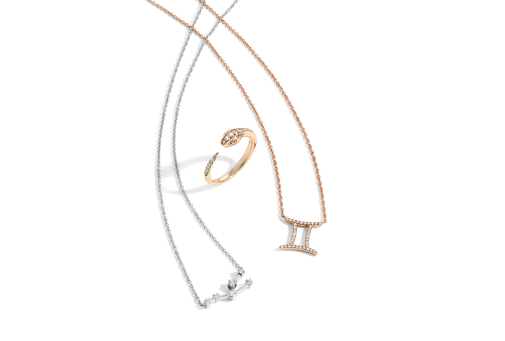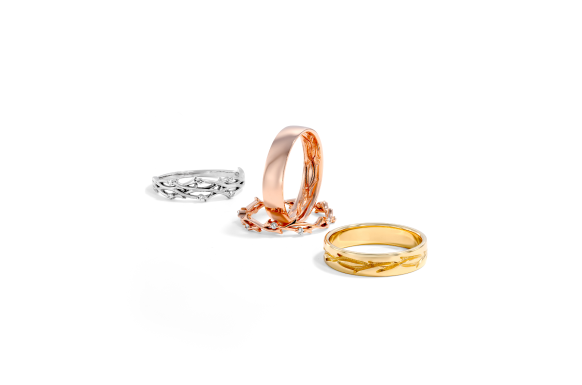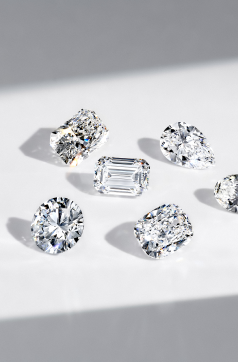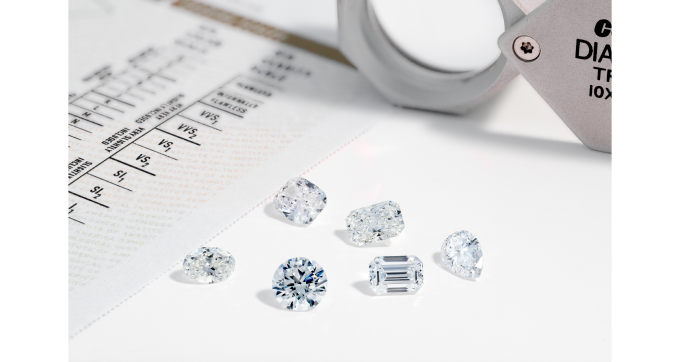Who buys the wedding bands: the bride, the groom, or both? Traditionally, the groom purchased both rings, but today, couples are redefining the rules. Some split the cost or shop for rings together, while others opt for a surprise that suits their partner’s style. Many still cherish tradition, with one partner gifting the bands, and in some families, wedding rings are passed down through generations or given by the couple’s parents. However you choose to do it, the meaning remains the same—a lasting symbol of commitment.
If you’re wondering how you should approach this important purchase, we’re here to make the decision easier. Wedding bands symbolize your commitment, but who buys them - and how - has evolved over time. In this guide, we’ll explore both classic traditions and modern trends, helping you choose what feels right for you. We’ll also share some stunning Keyzar designs to make your special day even more unforgettable.
The Traditional Approach to Buying Wedding Bands
If you and your partner love the idea of following the same tradition as your parents and grandparents, here are the time-honored methods for buying and exchanging wedding bands.
Why Did This Tradition Exist?
This tradition of who buys the wedding bands reflected the societal norms of the time. Men were expected to provide financial security, and wedding rings symbolized that commitment as much as they did love. As general roles changed, so did these customs. Today, couples buy their wedding rings in a way that best fits their values, whether that means following tradition, splitting costs, or choosing something entirely new.
Who Buys the Groom’s Wedding Band?
In traditional weddings, the bride (or her family) purchased the groom’s wedding band because it was a symbolic gift that represented her commitment and love. Even today, many brides love the idea of choosing and gifting their partner’s ring.
At Keyzar, we have a stunning array of men’s wedding bands to suit all styles and budgets, so if you’re a bride shopping for her groom, you have some beautiful options to choose from. Many of our designs come in different widths and finishes—like matte, hammered, and polished—so you can pick the perfect combination of style and comfort. From classic designs like The Daniel to more elaborate pieces like The Ethan, you’re guaranteed to find a ring that’s perfect for him.
Who Buys the Bride’s Wedding Band?
Tradition dictates that the groom (or his family) buys the bride’s wedding band and engagement ring. This practice hails back to a time when men were expected to be the providers, and purchasing the band was one of the first demonstrations of this commitment.
If you’re shopping for a wedding band for your bride, Keyzar has exquisite options that range from simple yet elegant rings like The Eleanor to nature-inspired pieces like The Twig. We offer a large selection of widths and finishes, so you can choose the details that suit her best. With so much beautiful variety, it won’t take long to find a band she’ll love.
How Modern Couples Approach Buying Wedding Bands
While some brides and grooms still follow the classic "you buy mine, I buy yours" method, more are choosing what feels right for their relationship and financial situation.
Common Modern Approaches
Some couples buy each other’s rings as a nod to tradition, while others split the cost, especially if they already share finances. Some prefer to include wedding bands in a joint budget, while others let the higher-earning partner cover the expense. Whatever approach feels right for you, the perfect rings should reflect your style.
For a timeless look, consider a sleek gold or platinum band for him and a diamond-studded design for her. If you love a coordinated look, matching band textures or engraved details add a personal touch: The Daniel and The Benjamin in matte finishes can create a complementary wedding style from two totally unique rings. Explore Keyzar’s wedding band collection to find the perfect set for both of you.
Factors to Consider When Deciding Who Pays for the Wedding Rings
Since there’s no longer a universal rule about who buys the wedding bands, here are some insights that can help you make the right decision.
Financial Considerations
Do you share finances? If you already split expenses, covering the rings together might make sense. On the other hand, if one of you has a significantly higher income, they may offer to pay for both. Prices also vary widely: an opulent diamond-studded band like The Anthony is more expensive than a more modest design like The James, so it’s important to set a budget before you start shopping together.
Traditional or Modern?
A couple should choose between tradition and a modern approach based on what feels right for them. Some see exchanging rings as a meaningful gesture that adds an emotional touch to the moment, while others prefer the tradition of one partner purchasing both bands. Cultural and family traditions can also play a role: some families have strong expectations about who pays, while others are more flexible. No matter the approach, what truly matters is selecting one that feels natural and meaningful to you as a couple.
Navigating Wedding Band Shopping as a Couple
Now that you know who buys the wedding rings, it’s time to figure out how you want to shop for them!
Should You Pick the Rings Together or Surprise Each Other?
Some couples love the tradition of gifting each other rings for their wedding day, while others would rather shop together and find the perfect match for both partners. In both cases, you’ll want to know each other’s preferences.
For example, if you’re both into maximum sparkle, The Elijah and The 1.8mm Helen make a stunning pair. The layered design of The Elijah is elevated by a continuous row of brilliant round diamonds while The 1.8mm Helen takes brilliance even further, with diamonds covering the band for an all-encompassing shimmer. Together, these bands create a matching set that’s both bold and endlessly luminous.
Matching or Individual Styles?
Some couples love matching wedding bands for a unified look. The Twig Cigar and The Textured Eternity Twig wedding bands, for example, are a perfect pair that seamlessly blends nature’s artistry with effortless beauty. Others prefer to wear rings that are complementary while reflecting their individual tastes, such as The Andrew and The Pave Twig. There’s no right or wrong choice: it’s all about what suits you best!
Addressing Common Questions About Who Buys the Wedding Bands
Still have questions? Here are some common concerns couples have when deciding who pays for the wedding rings.
Should Families Contribute to Wedding Band Costs?
Traditionally, parents helped cover wedding expenses, including rings. While this still happens, many modern couples prefer to pay for their own rings. If your family offers to contribute, consider whether it aligns with your wedding vision.
Is There a Right or Wrong Way to Pay for Wedding Rings?
Absolutely not! Whether you follow tradition or create your own approach, the most important thing is that the decision works for you and your partner. Your rings represent your love, not financial obligations.
Deciding Who Pays for the Wedding Bands—The Best Choice for You
For modern couples, choosing wedding bands is more than tradition—it’s a personal expression of love and commitment. Some find romance in buying each other’s rings while others choose to share the cost. Love stories evolve, traditions shift, but what truly matters is finding a way to honor your commitment in a way that feels right for both of you.
Find the perfect wedding band that tells your love story. Browse Keyzar’s ethically crafted collection today and make your moment unforgettable!






